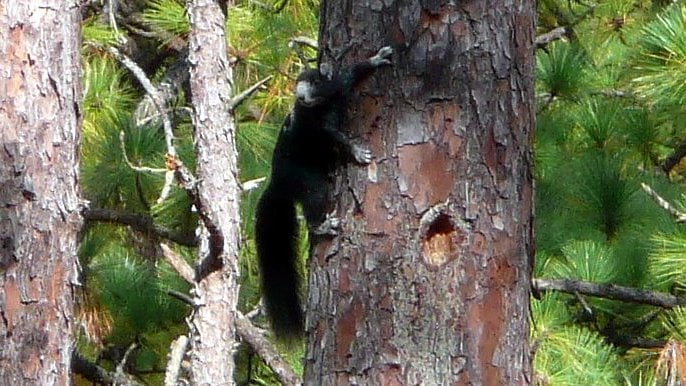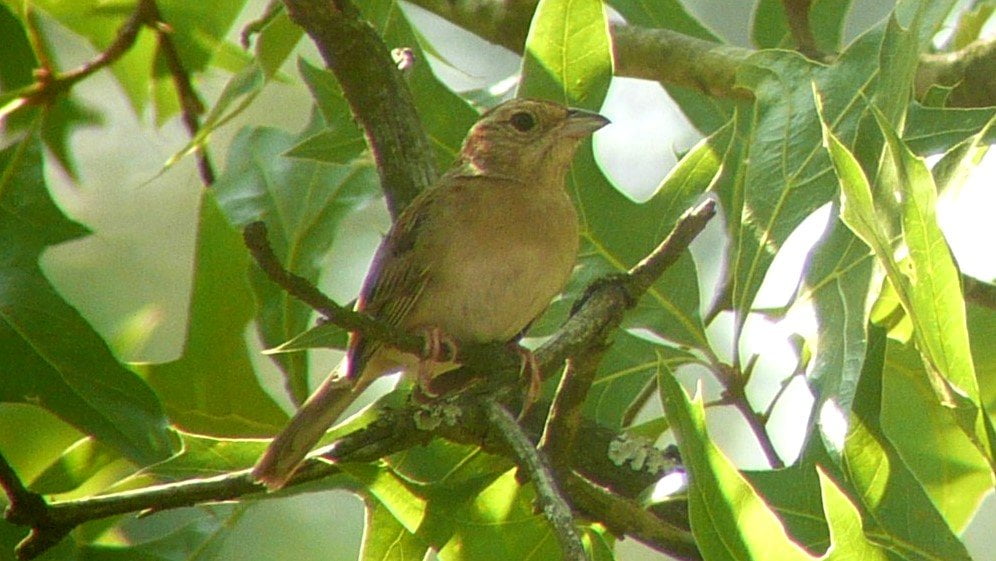Let’s say you shoot me an e-mail saying you’re going to be in my neck of the woods and you’d like to do a little birding. Better, you have a some time. Better still, you’re not interested in the regular local patch birding that is likely to net you most of the same species you could find just about anywhere east of the Mississippi River. You want specialties. Lifers. Stuff you can’t find in Michigan and Colorado and New York. Stuff you need to find in the south.
I don’t suppose I’m too much different from any birder who lives in the area stretching from North Carolina all the way to eastern Texas when it comes to fulfilling requests for specific local specialties. Birders in that entire stretch of continent are more or less familiar with the Pine savanna habitat that historically ran unbroken for thousands of miles along the coastal plain in areas where the soil is sandy and fire is allowed to run. I’ve written about this sort of habitat in this spot before and I don’t want to repeat myself too much, but it’s sufficient to say that once it became clear such soil was good for cultivation of cotton and tobacco, when the pines were logged for naval stores and furniture, and the fear of fire near human habitation allowed Oaks and Sweetgums to swamp what was left, the habitat that is quintessentially southern ended up fragmented and degraded, such that what remains is a mere fraction of what was. So it goes with too many things, I suppose.

That said, nearly every birder in that block of states knows where the nearest expanse of this habitat can be found, and because some states have been proactive about protecting and actively managing it with controlled burns (North Carolina has been particularly good about this), there’s enough prime habitat to support a number of the unique organisms. Herps are especially well-represented by the Pine Snake, and the federally threatened Southern Hog-nosed Snake and Pine Barrens Treefrog among others, but a few mammals deserve mention as well, such as the amazing Sandhills subspecies of the Eastern Fox Squirrel. This isn’t your normal feeder raider. It’s a a massive rodent nearly two feet long whose striking black and white coloration makes it look something like an agile aboreal skunk or a buck-toothed Marcel Marceau.

But this is not a squirrel blog, no matter how deep the connection between bird people and squirrels. What about the birds?
There’s the Brown-headed Nuthatch, of course, practically a guarantee anywhere there are pines. But the Longleaf Pine savannas are most famous for being the preferred habitat for the Red-cockaded Woodpecker, the fascinating little Picid who has the distinct honor of being the most mis-named species in North America. Not only is the famous cockade a barely visible speck of red on the high side of the cheek, but its species name, borealis, seems positively bizarre for a species whose home range trends farther south than any of its North American relatives. Nonetheless, such idiosyncrasies seem par for the course for a species who, alone among woodpeckers, makes its nest hole in a living tree and relies on dispersal by female birds to perpetuate the species while the males hang around with their parents to help next year’s brood. Those are just two of the little quirks that make this pecker a gem even among its charismatic kin.
The cavity nesters are child’s play, though. For the birder’s birder there is the only eastern member of a primarily western clan, the newly minted Peucaea genus, the underrated Bachman’s Sparrow, named for pastor, naturalist and J.J. Audubon collaborator John Bachman. Like most members of its genus, Bachman’s is a difficult bird to find outside of the short period of time when the males are singing on territory. For years no one knew whether or not they were even migratory because in winter they can be as difficult to see as mice. There still remains a lot to learn about where they go though the western population appears to be more migratory than the eastern one. In any case, catching a glimpse or this sharp specimen is generally a pretty special event even for local birders.

So here’s to the South, home to one of the most unique ecosystems in North America! And if you’ve got the time, an opportunity to find three fabulous birds you’re not likely to pick up anywhere else.













So this is what I’ll be doing on Monday? And you guarantee crippling views of all three? Sweet!
You didn’t just name two states randomly, you mentioned Michigan on purpose.
Well, Michigan’s got Jack Pines. Yeah, Jack Pines.
You know what that means.
Apart from that, nice post. 😉
@Corey- Yes?
@Jochen- Jack Pines are nothing, we had a Kirtland’s Warbler show up this fall out near Charlotte for a couple days, so there.
Did you go see it?
So there.
We are here in NC now..just hour south of Raliegh..
We can sit here in our Motorhome and watch the birds in my sisters yard. We are racking up a decent yard this for the fall. The Brown-headed nuthatch family visit everyday, along with Ruby-crowned Kinglet,Yellow-bellied sapsucker Tons of Robins and Cedar Waxwings gorging themselves on the Holly berries and all the usual suspects like the Brown Thrasher, Towhee,cardinals etc.
We haven’t seen a Red-cockaded Woodpecker here in her yard..but just a few miles down the road at Weymouth Woods, which I am sure you know of…we always see the Woodpecker there and added bonus of the Bachmans sparrow((easier in the spring when calling) and lots of Brown-headed nuthatchs.
Its a wonderful place to bird!
Wait, Nate, does this mean I get to see a Kirtland’s Warbler on Monday too? Sweet!
@Corey: No, no, no, no, no, no, no, ONLY in Michigan!
@Jochen- No, but I figure it’s just a matter of time.
@Dawn- Corey and I are going to be at Weymouth Monday morning looking for the RCWs. I found a winter Bachman’s there last year, but it was total luck. Hopefully I can duplicate it.
@Corey- I like our odds.
Nate … good timing, I actually meant to check in with you. I’m going to be in Atlanta all of next week, specifically @ the hotel at Emory which apparently has a big preserve with trails attached to it. Anything I should keep an eye out for around those parts that wouldn’t show up in NY?
@Nate: it’ll show up in your back yard, ABA #500! You might want to plant some Jack Pines this winter though…
@Meredith- I don’t know Atlanta specifically, but I suspect Brown-headed Nuthatches would be a certainty. Anywhere where you can find stand of pines you can listen for their squeaky duck calls.
Closest place for the RCWs looks to be Piedmont NWR some ways to the south.
@Jochen- I have Loblolly Pines right now. They won’t do?
Thanks Nate, the call will probably be the key to the Nuthatches for me. I’ll let you know if I catch anything good!
I need to see that squirrel…..
Today it is official that we have the go ahead to move to the Triangle area. The Mrs. is coming out with me the week before Christmas to find a home to rent. I can’t wait for you to show me all three birds! Are they year-round there? I’ll actually be in your neighborhood mid-week next week.